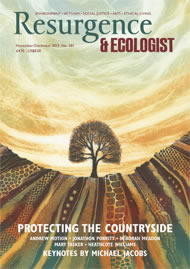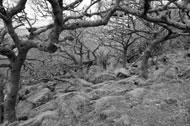Ansel Adams' lifelong fascination with the great outdoors started at a young age. As a teenager he visited the great Yosemite National Park, which opened his eyes to the world around him, the vast plains, spectacular waterfalls and diverse fauna gave the young Adams something to focus upon. He had recently taken up photography, using at that stage the most basic of equipment, to record what he saw and then compiling his work together to provide a diary of images. Yosemite was particularly influential to Adams, so much so that the early 1920s saw him employed there with ample time to perfect his camera work. He was fortunate that whilst around Yosemite, he met some of the greatest conservationists of the day who inspired him to further explore the aesthetic beauty surrounding him.
This passion showed in his photography and his choice of composition and how he visualised his images. Spending much of his time taking photographs he began to inject much more passion and emotion into his images. Through his work Adams began to meet some extraordinary figures of the art world who, recognizing his talent, saw his work as revolutionary for its time because of how it swayed away from the 'in vogue' styles.
Adams' images of the Yosemite valleys began to attract serious attention. The books that Adams produced showed the beauty of the places he visited to the masses and as far as the National Parks were concerned, they provided a much needed conservational safety net because they showed what these places looked like before tourism. His persistent campaigning helped to expand areas covered by the National Park status and helped promote the 'beauty comes first' thought process. He campaigned widely for balance between the wilderness and the masses and their pressure on the national parks.
Adams became widely respected as a senior authority in the usage of light in his images and seemed to use it like few others before him. He became a pioneer in 'pre-visualisation', perfecting the art of seeing an image before it is taken so that he could imagine the effects of differing compositions and lighting conditions on his images. Of course the 'pre-visualisation' was as much to do with his work in the darkroom as it was behind the camera, since that is how the images for the big glass plate camera he used came to fruition.
Adams was continuously experimenting with composition and lighting effects on his images. Although he is best renowned for his work with black and white film, he also worked with colour. He preferred black and white media for his work, as he felt the lack of colour focused the eye on the raw beauty of the landscape. He also felt a greater element of control when not only capturing the original image out in the field, but also developing the images in his darkroom. He believed that a sense of colour could be gained from a well-executed monochrome image, along with a greater appreciation of pattern, shape and texture with the added distractions of colour removed.
The long lasting legacy that Adams left has perhaps not been matched by many other visual artists, he was completely revolutionary for his time in terms of technical ability and pre-visualisation, as well as having the ability to teach and write extensively about photographic technique and conservation needs. His list of books is extensive, many of which were published after his death in 1984, and his images are still featured regularly in museums, lectures and journals throughout America.








